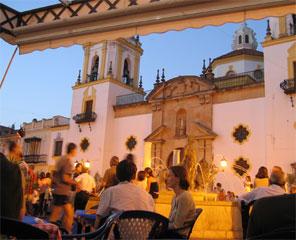Last updated 15-August-2004.


But we had a few friends suggest that we shouldn't miss Ronda, so we changed our plans to drive from Marbella to Jerez (via Gibralter and Cadiz), and instead decided to travel to Jerez via Ronda. Our visit to Ronda was intially intended to be for only a couple hours, but after parking our car, and wandering for 30 minutes, we decided to stay overnight if we could find a decent hotel, and cancel our Jerez visit. So we quickly searched room availability and quality in some of the Hotels in the downtown core, and then upon finding a room we liked, we successfully cancelled our Jerez reservations at no expense/penalty.
Ronda is a small city, with a population of around 35,000. Its main attraction is it is situated right on the edge of a very spectacular, 100meter deep gorge (the El Tajo gorge). Plus the scenery all around in the Serrania de Ronda is typically a bit more green than the area just to the south.
Because of Ronda's geography (with the very steep gorge) on one side, it was near impregnable to the Christian armies until the very last years of the Reconquest. It fell to Fernando El Catolico in 1485 because the governer (and army) of Ronda left to defend Malaga, thinking Malaga was about to come under attack. Instead, some accounts claim, the Christian's managed to penetrate up a narrow path, practically up the face of the gorge, to capture Ronda.
Washington Irving provided a somewhat different account on the fateful fall of Ronda to the Christians: Washington Irving's account of the fall of Ronda
Lonely Planet notes Ernest Hemignway's "for Whom the Bell Tolls" tells of how, during the Spanish Civil war, the fascists in a small Spanish town were rounded up and were thrown over a cliff. That episode is purportedly based on real events in Ronda.
I purchased a small portable tripod/clamp, just before this trip, and I decided to try it out for the first time. You can see me below with my small tripod and my very portable (and relatively new) Canon digital camera! :-)
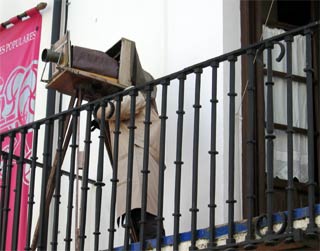
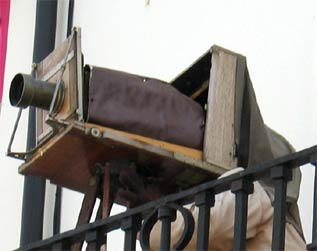
Well, perhaps I exaggerated a bit above ! At +350 C, the weather was much too hot for that "raincoat"!
All kidding aside, the image below gives a better appreciation as to the
tripod/clamp arrangement I used:
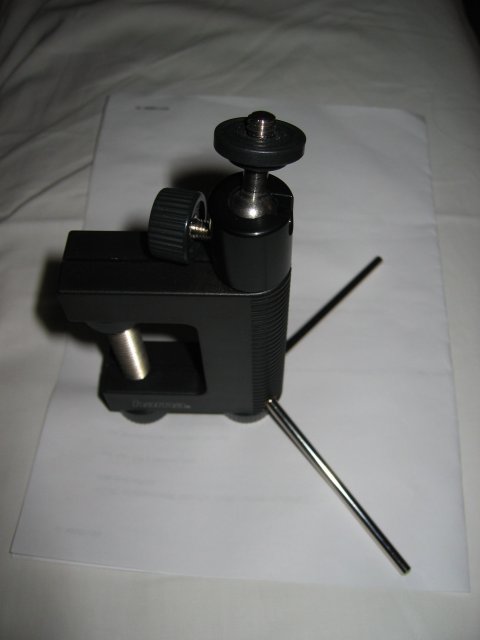
Still, I felt I made major strides in my ability to take images more reliably. While I feel that I still have many of orders of magnitude of improvement left (in my ability to take images with my camera), I am generally much happier with the quality of my images on this trip, than I was on previous vacations. In particular, as each day went by, and I had a chance to upload the images I took to a laptop PC, and examine them in reasonable detail, and I began to learn. There is nothing like relatively quick feedback as to how one's image turned out, to help the learning curve.
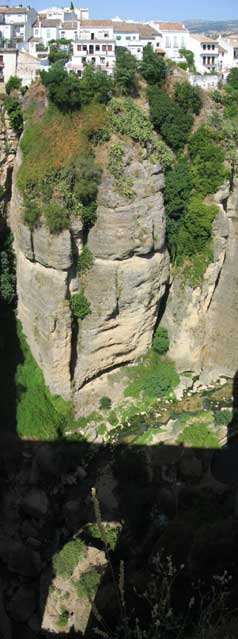
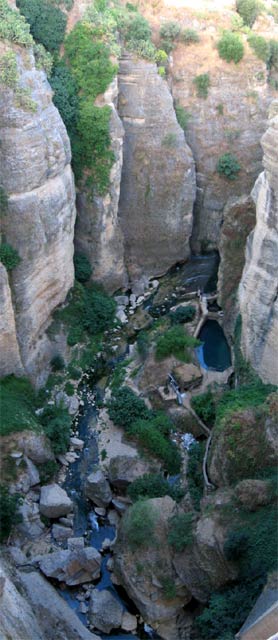
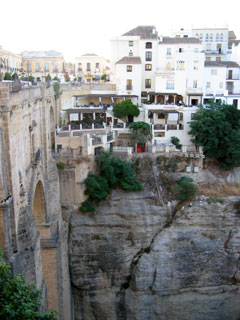
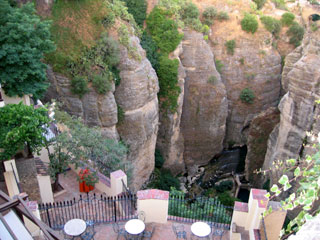
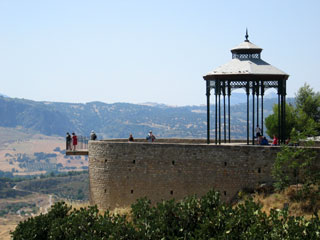
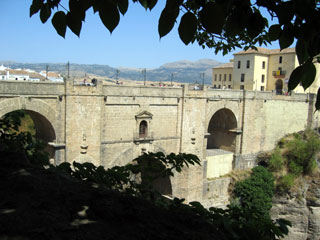
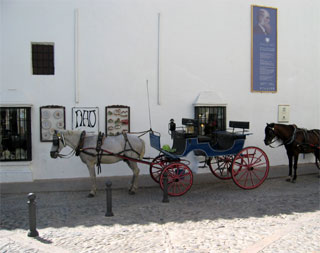

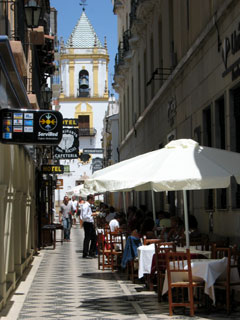
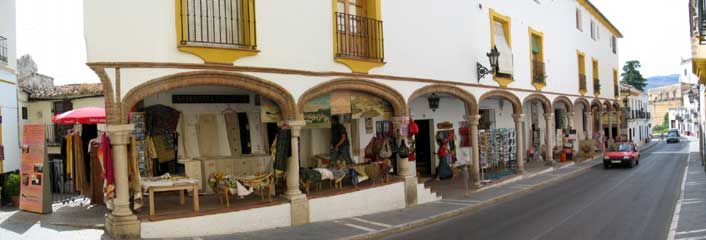
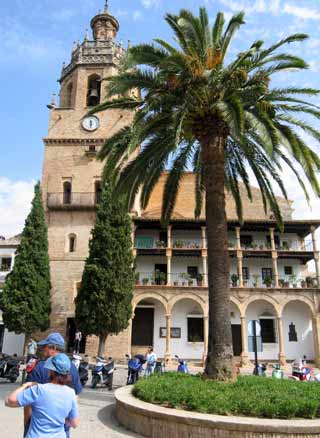
These two side-by-side images below (of the bridge over the El Tajo gorge), are taken with different digital camera settings (and some minor Photoshop adjustments). The image on the left is taken with a flash, and the one on the right with my tripod/clamp and no flash.
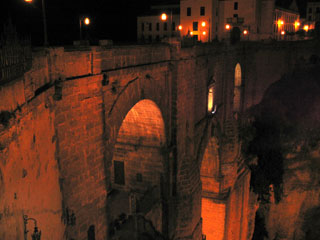
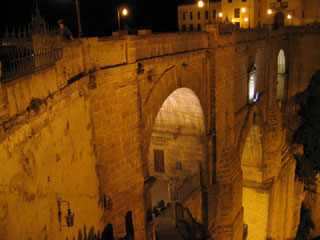
Here are the results of some more playing with my digital camera and the clamp/tripod (with no flash). The fountain is located in the Plaza del Socorro.
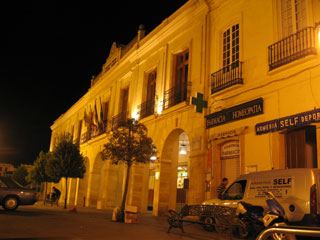
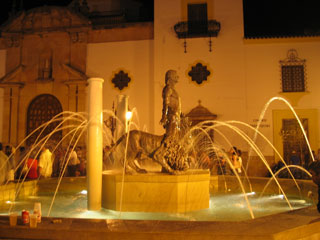
The night life in Ronda is purported around the "Avenida Doctor Fleming" area. We noted a few bars in that area, but frankly, we thought there were more interesting bars (and crowds) just north of the Plaza del Socorro.
Plaza del Socorro in the early evening.